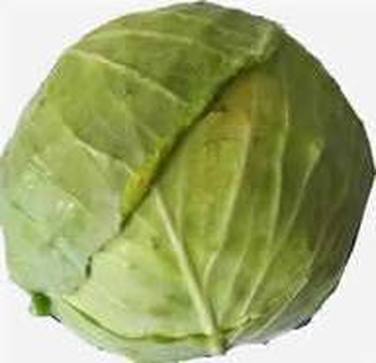Cabbage is a vegetable commonly taken leaves to be eaten as vegetables. This plant comes from southern Europe and western Europe, where the cabbage is derived from French "Cabus chou" which means cabbage head. While the term "cabbage" is derived from the Dutch "kool". Vegetables are named latin Brassica oleracea L. This includes plants Capitata. The leaves are arranged very tightly and form a flat circle or sphere is called the crop / head / head.
Cabbage contain lots of vitamin A, B, C, and E. The content of vitamin C was high enough to prevent acute ulcers (scurvy). The minerals contained in it are potassium, calcium, phosphorus, sodium, and iron. In addition, fresh cabbage also contains a number of compounds that stimulate the formation of glutathione, a substance required to deactivate the toxic substances in the human body.
Some of the health benefits of cabbage leaves for them:
1. Treating venereal disease. Way, take a few pieces of old cabbage leaves, and garlic and onion to taste. Finely sliced all the ingredients, put them in a saucepan, then embunkan for 1 night. Knead, add a little lemon water, then strain the water. Drink every morning one time to heal.
2. Treating hyperaciditas. Way, take 1/4 kg cabbage and a carrot size. Finely minced, add 2 cups of water, then strain. Add 1 tablespoon of sugar and store in the refrigerator to cool. Drink for a day, 30 minutes before meals or as a pain in the stomach.
Cabbage contain lots of vitamin A, B, C, and E. The content of vitamin C was high enough to prevent acute ulcers (scurvy). The minerals contained in it are potassium, calcium, phosphorus, sodium, and iron. In addition, fresh cabbage also contains a number of compounds that stimulate the formation of glutathione, a substance required to deactivate the toxic substances in the human body.
Some of the health benefits of cabbage leaves for them:
1. Treating venereal disease. Way, take a few pieces of old cabbage leaves, and garlic and onion to taste. Finely sliced all the ingredients, put them in a saucepan, then embunkan for 1 night. Knead, add a little lemon water, then strain the water. Drink every morning one time to heal.
2. Treating hyperaciditas. Way, take 1/4 kg cabbage and a carrot size. Finely minced, add 2 cups of water, then strain. Add 1 tablespoon of sugar and store in the refrigerator to cool. Drink for a day, 30 minutes before meals or as a pain in the stomach.

 RSS Feed
RSS Feed